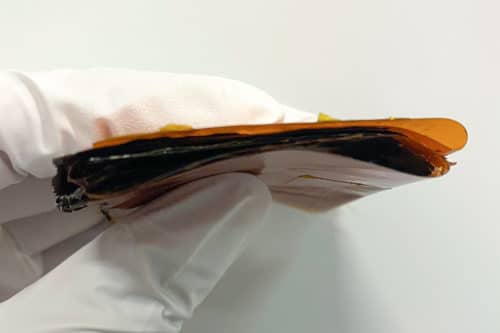According to University of Toronto and University of Waterloo researchers, wood-derived materials can be utilised to gather electrical energy from daily actions like walking.

The team demonstrated the usage of lignocellulosic nanofibrils – generated from tree bark – in a prototype self-powered device capable of delivering a wireless signal to a smartphone via Bluetooth. Biometric data such as heart rate, oxygen levels, and skin conductivity can be tracked with such sensors. The advancement could help these devices operate better while also reducing their environmental effect.
“Biosensors are common in wearable electronics, but today they are powered by batteries,” says Ning Yan, a professor in the department of chemical engineering and applied chemistry in the Faculty of Applied Science & Engineering, and a co-author of the study. “This makes them bulky, inconvenient and costly. Sensors without batteries could be thinner, smaller and cheaper. You would never again have to worry about forgetting to charge the battery. You could just stick it on your skin, and it would be powered by your natural movements.”
The trioboelectric effect, a type of static electricity, is the driving force behind the invention. Because some materials attract electrons more than others, bringing two different materials into touch and then separating them can result in an electrical charge accumulating between them. Researchers from all over the world are working with triboelectric nanogenerators, which harness this phenomenon to generate small amounts of power.
The next challenge was to find a material that exhibited this behaviour. “There has been some experimentation with using natural materials such as cellulose in these types of triboelectric generators,” says Yan. “But most teams have used cellulose only in the layer that loses electrons, which we call the tribopositive layer. We wanted to develop a natural substitute for the other side, the tribonegative layer.”
While other teams have employed cellulose nanofibrils — the principal plant component in paper and cardboard – Yan and her colleagues used lignin, a natural polymer. “Lignin is a complex, branching molecule,” says Nicolas Tanguy, a co-lead author on the new paper who conducted the research as a post-doctoral fellow in Yan’s lab. “In many pulp and paper products, lignin is an impurity to be removed. But in this case, we found that leaving about 30 per cent lignin in the nanofibrils actually improved their performance as tribonegative materials.”
“Our key challenges were finding a highly efficient way to convert mechanical energy into electrical energy and then storing enough of that energy to power the system,” says Ban, who completed his doctorate at University of Toronto. “It was rewarding to achieve that while also limiting the environmental footprint of the multi-function system.”






